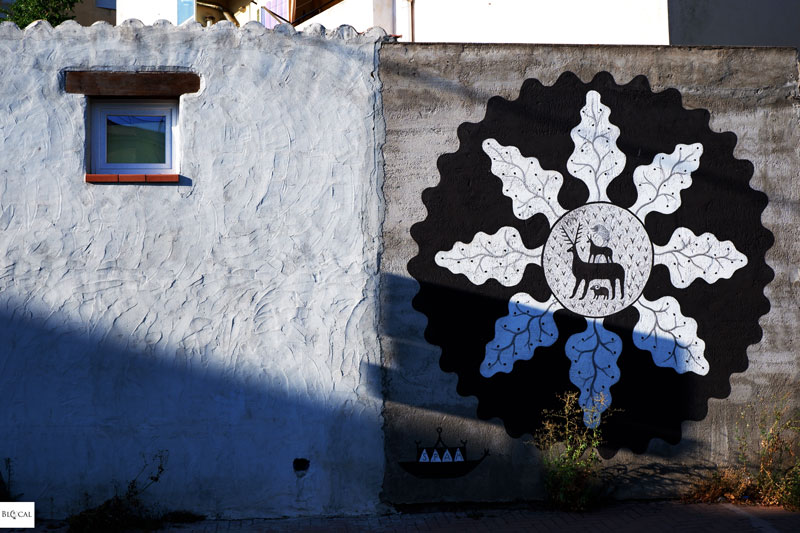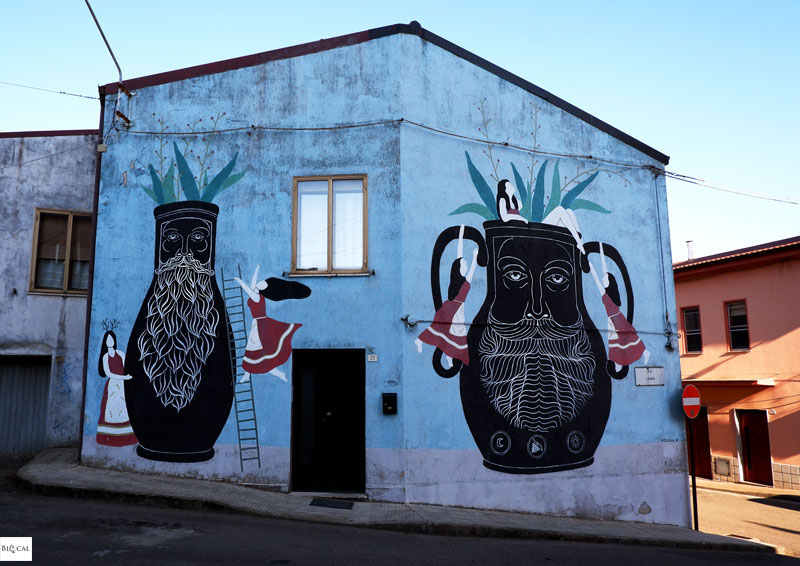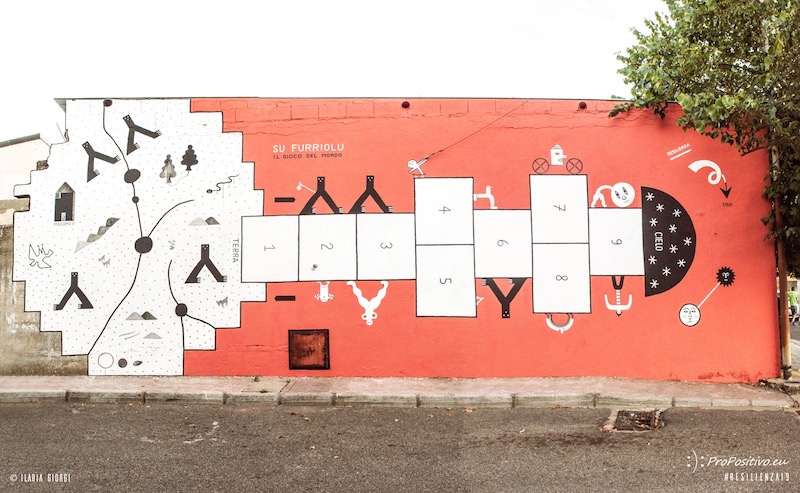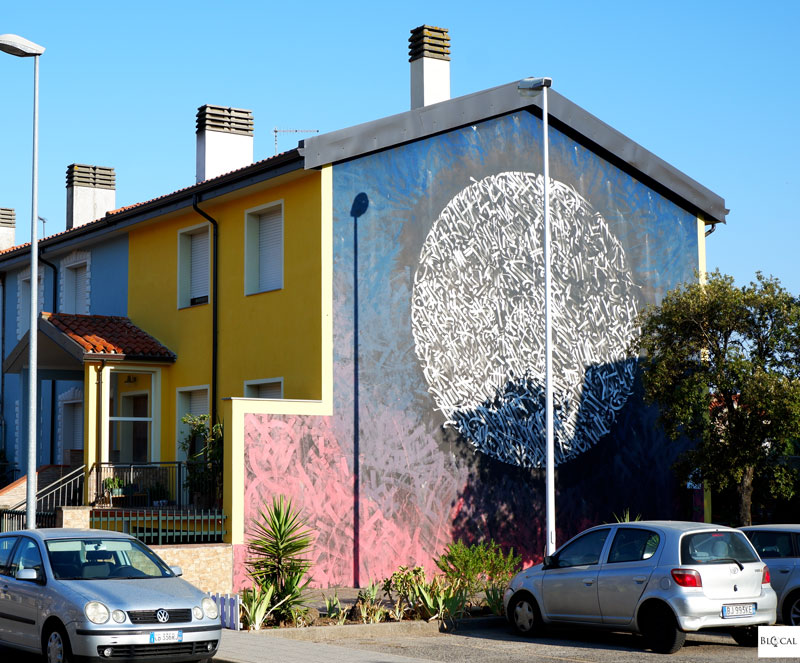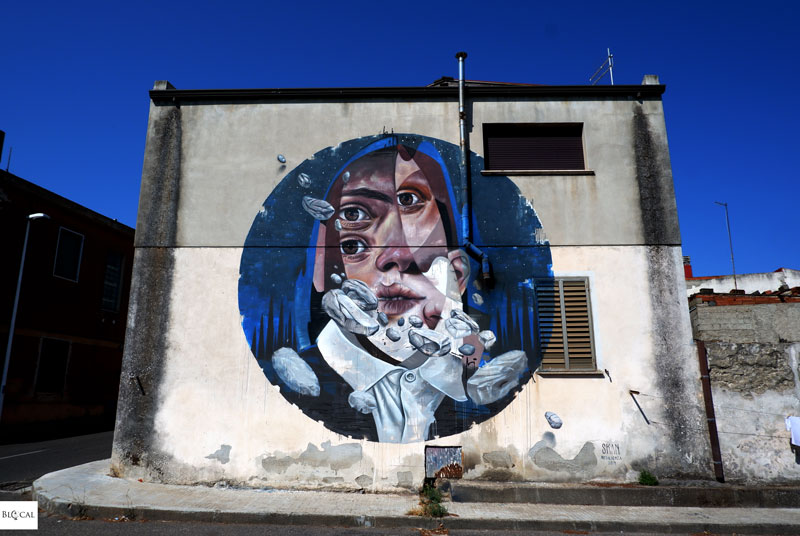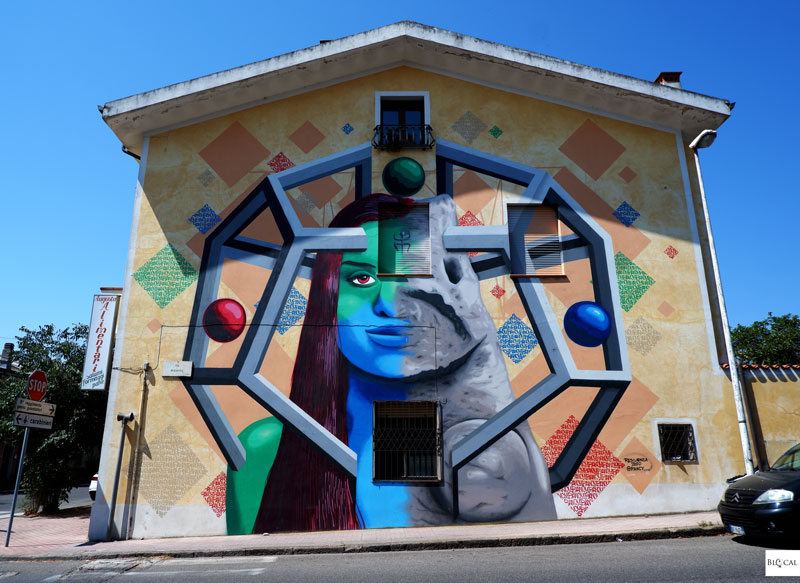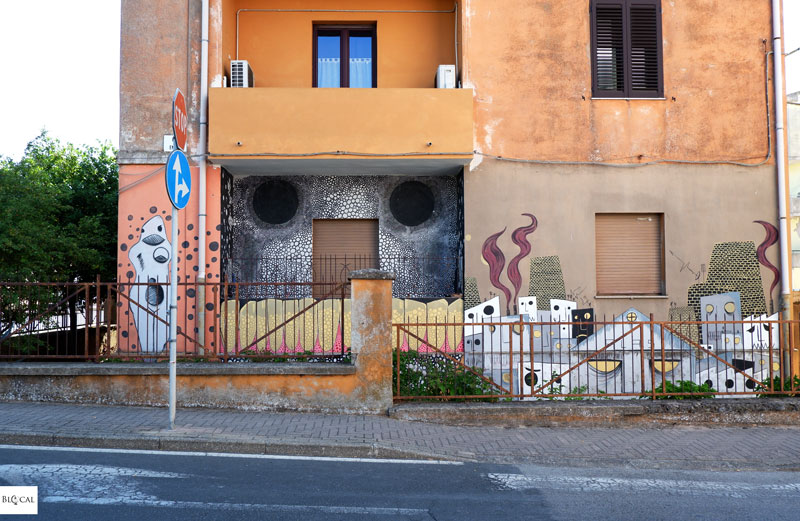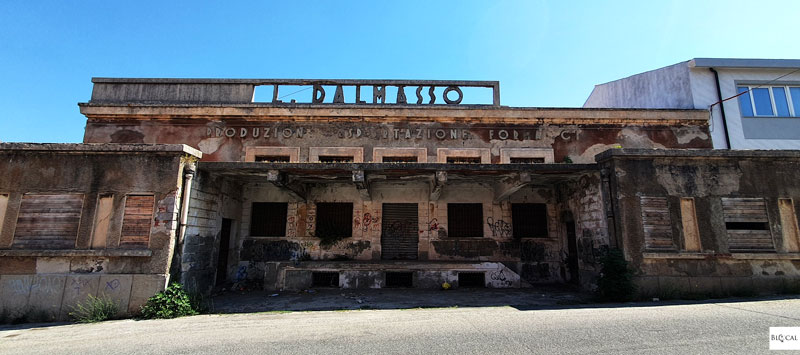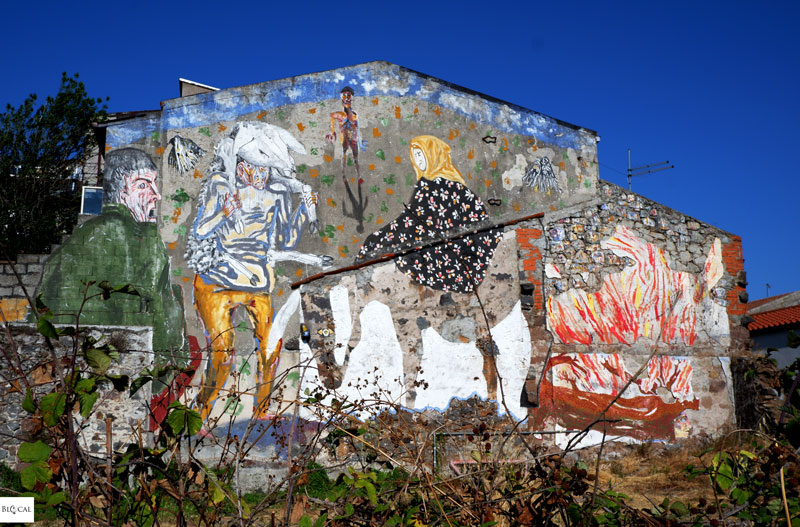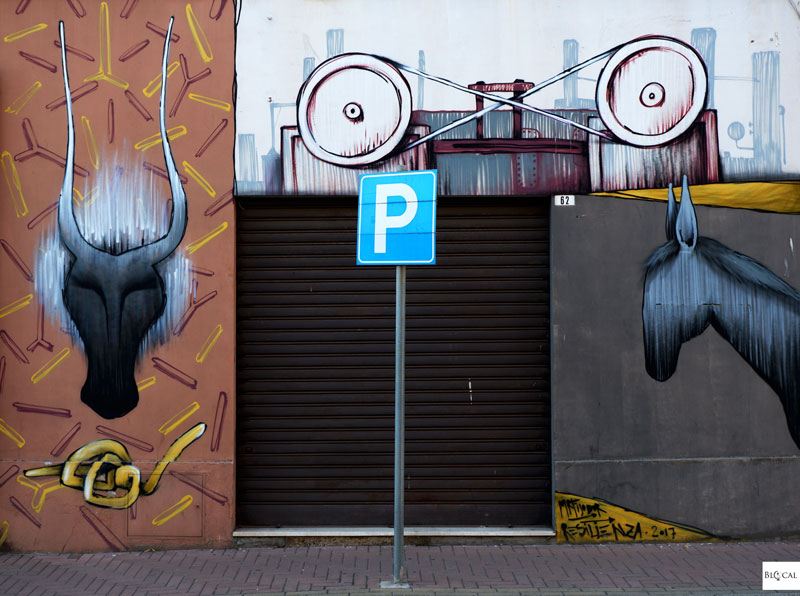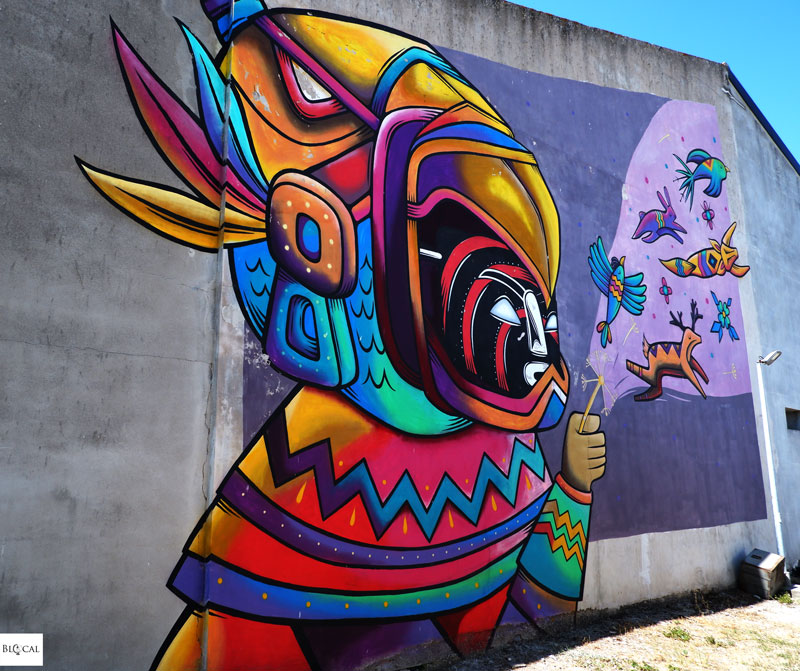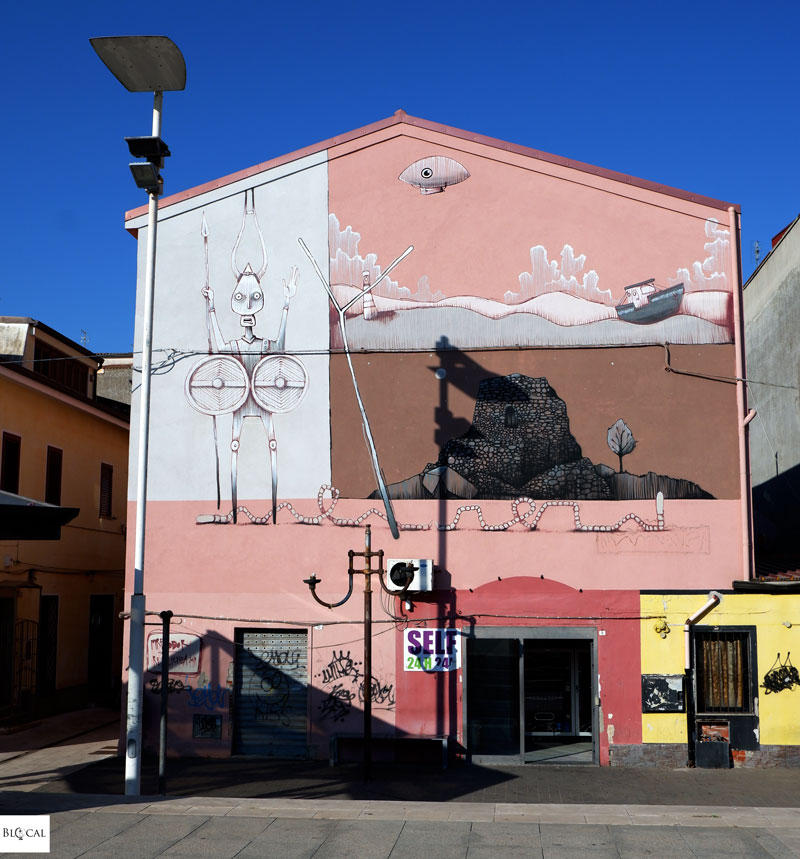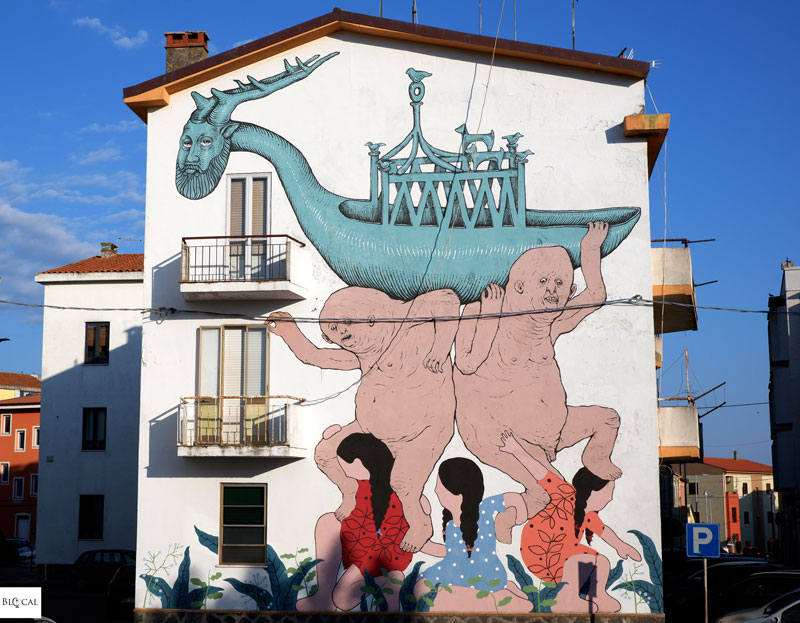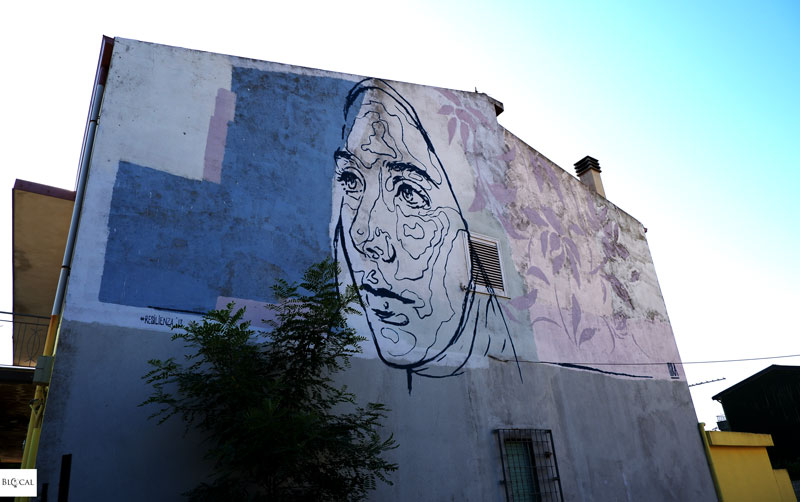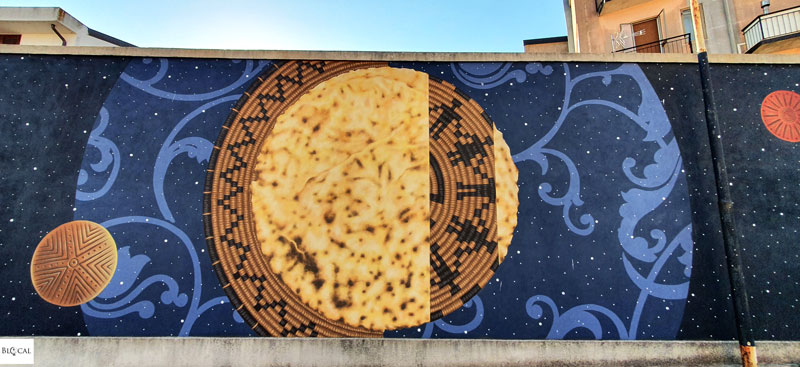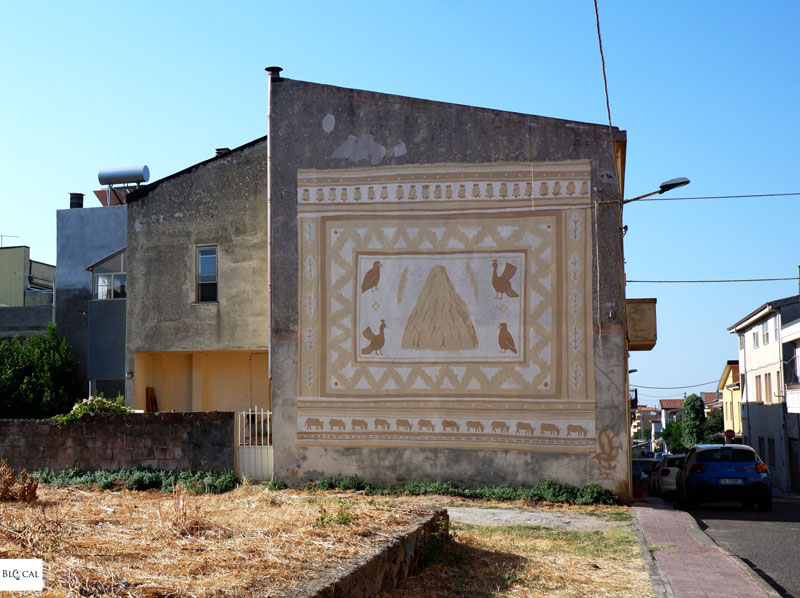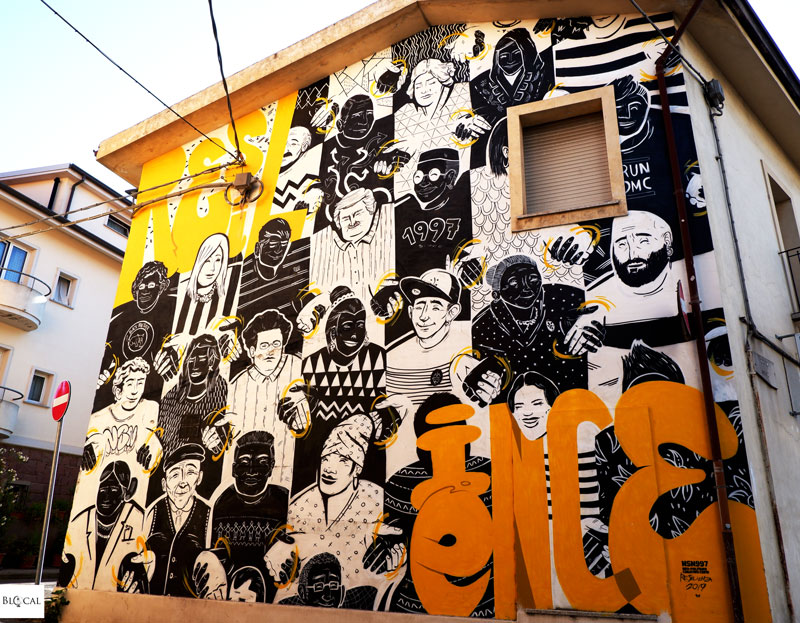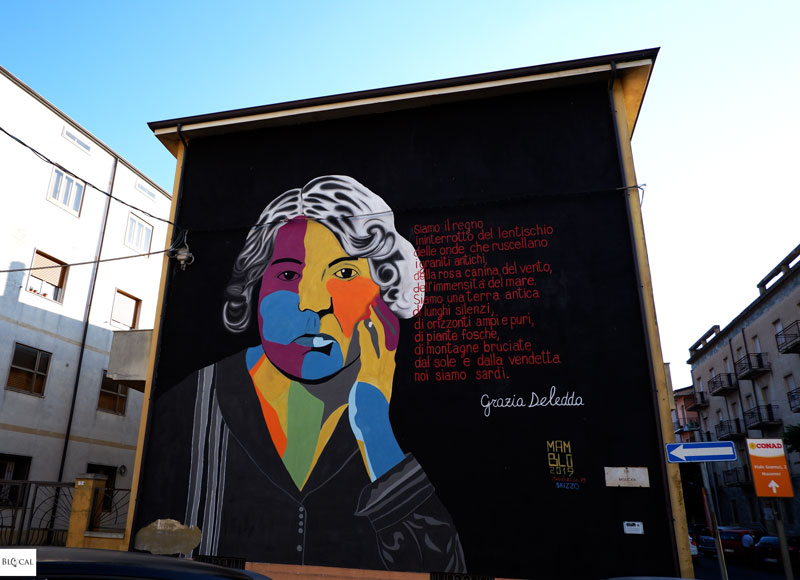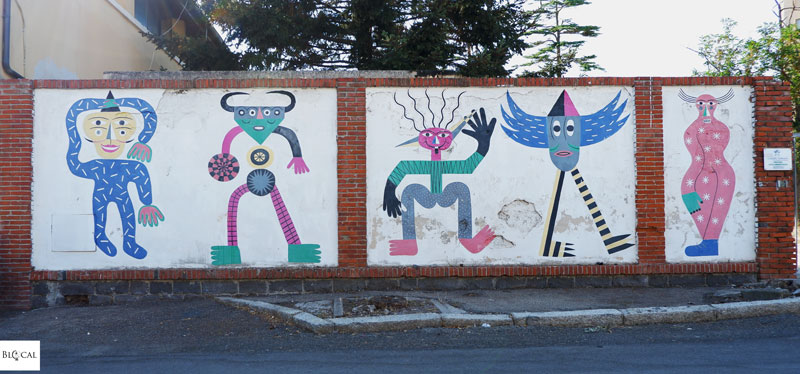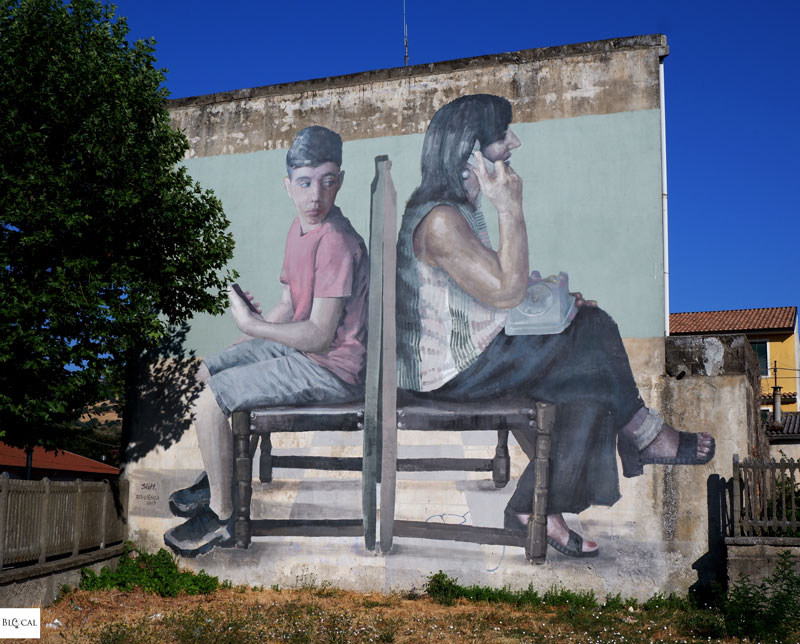During my month as a digital nomad in Sardinia, I ventured into the island’s seldom-visited interior so I could document Sardinia’s old mural tradition as well as contemporary urban art.
Some of the best street art in Sardinia can be found in Macomer, a small town in the Marghine region, well-known for its prehistoric monuments and its previous century’s economic boom that brought about an industrial revolution of sorts, only to be followed by a crisis that forced thousands of families to emigrate.
Depopulation is still a threat in Macomer, but things are turning around thanks to a group of youngsters who chose to move back and bring a renewed energy to the town by addressing local issues through public art and social sciences.
Street Art in Sardinia: Macomer’s Festival della Resilienza
Wishing to turn the crisis into an opportunity, in 2016, this group of brave youngsters inaugurated the Festival Della Resilienza (Resilience Festival), a series of cultural events and workshops aimed at bringing life into the local community and beautifying Macomer with the help of street artists selected through an international street art contest.
Rather than breaking with the past, the Nuragic archaeology of the area and the island’s ancient traditions have been put at the core of Macomer’s Festival Della Resilienza and narrated through the new medium of street art, thus being rediscovered by younger generations and visitors alike.
Visitors can also take advantage of an interactive map, bringing together street art in Macomer and the surrounding villages, historical buildings, natural sights, Nuraghi, and other prehistoric monuments; all making up the so-called Muraghes Art Park.
Let’s take a closer look at my favorite murals in Macomer after the Reel…
Street Art in Sardinia: Murals in Macomer
Life is a game in which you should push yourself towards a better place, although you’ll win at it only when you come back. The metaphor behind “Su Furrioulu” (2019), the third mural painted in Macomer by the art collective Guerrilla Spam, is the life story of the organizers behind Macomer’s street art festival.
However, the happy ending represented by Guerrilla Spam through this simple children’s game isn’t always an option. Depopulation is a scourge that still affects Sardinia; a fact often represented in several murals throughout Macomer.
In “Sunset” (2018), Mexican calligraffiti artist Said Dokins transposed onto the wall a poem by a girl who emigrated abroad. She wrote about her loss of identity and feeling lost and rootless.
A similar trauma is represented in Skan‘s mural “Io in Fuga” (Fleeing Self, 2019), in which a young man is visibly troubled, frustrated by the lack of possibilities in his local area. Sardinian youngsters are forced to cut both their affective and geographical roots; hence the disrupted face, which became iconic in Skan’s surreal style.
More impactful street art in Macomer on the topic of depopulation is the series created by local street artist Ulluarts around Piazza Italia. “Giga-bye” (2017) represents the evolution of Sardinia through the life of a youngster whose appearance is inspired by Monte Prama’s giants, the ancient stone sculptures from Sardinia’s Nuragic civilization.
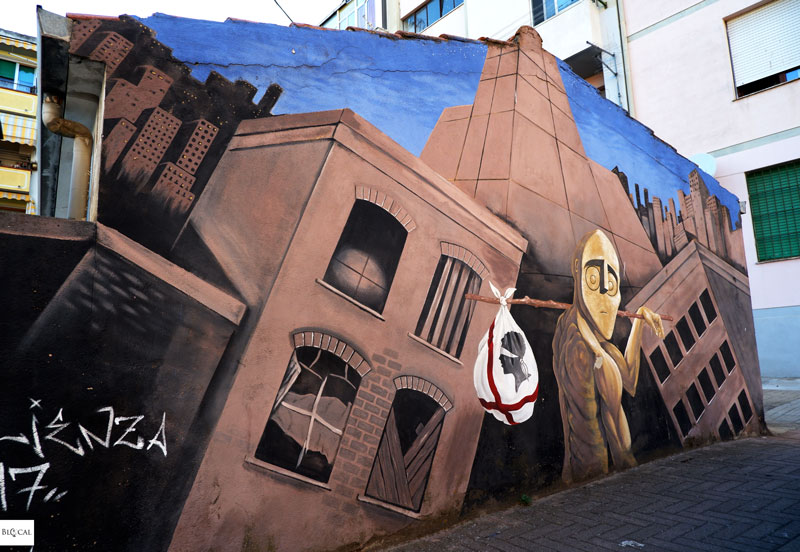
Nuragic art is, indeed, an endless source of inspiration for street artists invited to Macomer’s Festival Della Resilienza. In “La Venere di Macomer” (2020), street artist Rancy juxtaposed the Paleolithic statue of the Venus of Macomer, symbolizing an ancient icon of beauty to the contemporary beauty of a model.
The Venus of Macomer is also represented in a mural by Macomer street artist Zanno. In “Remocam eat herself” (2017), Zanno tells the story of Macomer from ancient Nuragic archaeology to modern industrial archaeology. The mural is about depopulation and the economic crisis that led to the abandonment of the many factories in the area.
Even though Macomer is the Mecca for urbex lovers like me right now, I hope that the great industrial heritage of Macomer will soon become part of the touristic offer of the area. After all, that wouldn’t be a first in Sardinia, whose industrial heritage has received UNESCO recognition.
As for now, the visual impact of Macomer’s abandoned factories is so strong that it has influenced Emajons and Sbrama in designing their mural. “Ombre nere” (Dark shadows, 2017) is inspired by a lullaby that a young girl sang to remind herself that the shadows of the workers walking past her window at night to go to the wool factory will eventually disappear.
The city’s industrial past is represented in yet another piece of street art in Macomer, this one by Mr. Fijodor. Coming from the mainland, the street artist represented four emblematic things that come to his mind when thinking of Macomer, each one from a different age: a factory, a squiggle, a donkey, and a native mask -since the central area of Sardinia is also known for its Carnival traditions.
Traditional Sardinian masks reproduce gloomy and austere faces with the semblance of gods, demons, and half-man half-beast creatures. We also find them in “Il Ponte” (The bridge, 2019), the colorful mural painted by Los Metzican. With this artwork, the art collective established a bridge between Sardinia and their hometown of Toluca, Mexico. Mexican culture is also very fond of native masks, which are a recurrent motif in the body of work of this collective of Mexican street artists that want to spread Aztec culture around the world. This mural in Macomer shows the Aztec warrior wearing a Sardinian mask: it’s the birth of a new hero who, together with the five holy animals, brings the world together.
Sardinian heroes are the protagonists of a second mural by Mr. Fijodor, “Marinai, contadini e Guerrieri” (Sailors, farmers, and warriors, 2017). Representing the three archetypes of Sardinian people, the artwork recalls ancient bronze statues, the Nuraghe relics, and the ubiquitous sea.
Sardinian society is also represented in “Totem” (2019), a collaborative mural by Andrea Casciu, Kiki Skipi, and Nemo’s. Looking for the archetype of Sardinian society, the artists point to the traditional matriarchal society of ancient Sardinia. However, in this mural, women appear squashed by masculine inhumanity, on top of which there’s a Nuragic boat symbolizing the island’s ancient civilization.
Women have been a pillar of Sardinian society since ancient times, and we find them at the center of two more murals in Macomer. With “Sa fede Sarda” (Sardinian Faith, 2018), Spanish street artist Isra tributed local women and their role in society. The mural also hints at a family sawmill that used to be in that courtyard by painting woodgrains on the girl’s countenance: veins that mark the wood in the same way as women have marked Sardinian society.
Women and their rituals, such as baking bread together, inspired Patta‘s mural “Pane ‘e luna” (Bread and Moon, 2020). Making bread is a sacred activity, hence the many rituals associated with it and passed down through generations of women. In rural societies, bread symbolizes seasonality, and so does the moon, which has always been associated with the female body. Patta’s mural also features traditional weaving patterns, which are unique to each geographical area and depend on the historical, political, economic, and environmental events that have taken place over the centuries.
Referencing Sardinian weaving patterns is the mural “Figli Delle Pietre” (Sons of stones, 2017), painted by Luogo Comune, whose composition recalls a Sardinian carpet.
More references to traditional patterns can be found in the mural “Resilience” (2019), by NSN977. The Madrid-based art collective of Italian origins drew inspiration from an iconic Sardinian design representing a human cordon. They used this ancient pattern to symbolize resilience, which the artists believe is possible only when people come together. Among these women and men holding hands, we can recognize some notable Sardinian people, like Antonio Gramsci, the founder of Italy’s Communist Party, and Grazia Deledda, the first Italian woman to receive the Nobel prize.
Antonio Gramsci and Grazia Deledda are tributed in two more murals in Macomer: Antonio Gramsci was portrayed next to his famous quote on the importance of education by Sardinian street artists Giulia Azeri and Valentina Vinci, while Mamblo painted Grazia Deledda in his iconic pop art style.
Next to Antonio Gramsci and Grazia Deledda, the NSN977 collective painted more notable people like Rosa Parks and Jose Mujica in a massive tribute to a glocal society and the founding value of Macomer’s street art festival: Resilience.
In Massimiliano Vitti‘s mural “Rosalio” (2018), the figures coming together in the act of resilience aren’t human but surreal creatures inspired by Sardinian traditional masks and statues. Rosalio is a Latin word indicating the act of stepping back onto a boat turned over by the sea. Realized together with the youngsters from a local charity, this mural is a powerful reminder that to change things, we must fight together, like the volunteers at Propositivo are doing through their Festival Della Resilienza.
This public art festival holds street art at its core to establish a dialogue between ancient and contemporary art, as well as between generations. It is a conversation that constitutes a challenge, as represented in Slim Safont‘s mural “Distance” (2019). In his photorealistic style, Spanish street artist Slim Safont represented a young guy holding a smartphone while trying to establish eye contact with an older woman who has a rotary phone.
I find this mural the perfect metaphor for the hard work of the organizers of Macomer’s Festival Della Resilienza, who are working hard to create a bridge between old and new, tradition and innovation, through public art and cultural events addressed to the whole community.
Macomer Street Art Map
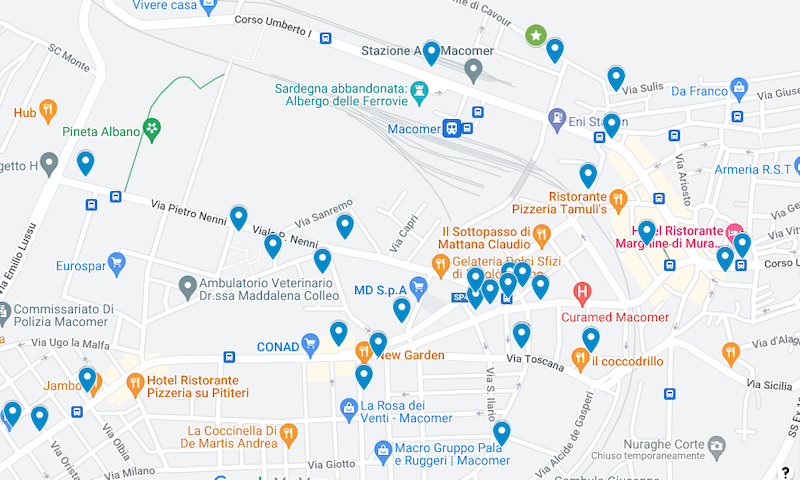
Did you like this article? Subscribe to my 1st-of-the-month newsletter for more!
Find Macomer street art in my Sardinia Travel video:
